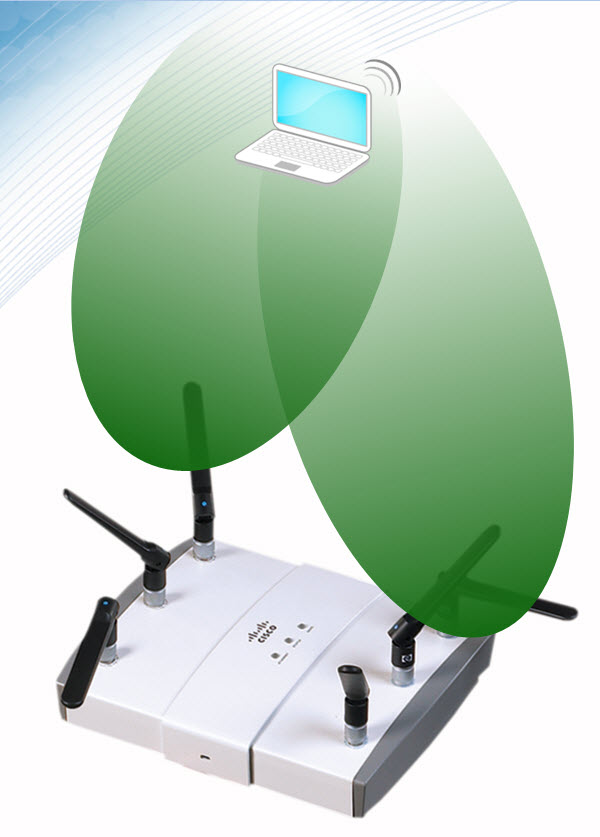Beamforming: The Best WiFi You’ve Never Seen
Beamforming Basics
Think of radio transmitters as little stones dropped in a pool. You know from high school physics that a dropped object will send out waves across the water’s surface. If you drop two stones, those waves will overlap with each other in a regular “interference” pattern. Changing the characteristics of a stone will change the amplitude and phase of the waves it emits, as well as the characteristics of the interference pattern generated with waves from other stones.
If you have enough control over the situation, you can have a sensor at the edge of the pool looking for just the right wave pattern, and you can keep changing the stone characteristics until that exact pattern arrives at that particular point. Elsewhere in the pool, the wave pattern will be different, and that’s fine. You’re only looking for that one pattern in that one place. Everything else can be ignored.
In a nutshell, this is the essence of beamforming. You’re controlling the output characteristics of each transmitter within a transmitter array so that the overall signal is optimized to reach a given receiver in a given direction. With an antenna array in which each antenna is transmitting with slightly different characteristics, you have what’s called a phased array. As we’ll see, there are two primary forms of phased array used in wireless access points: on-chip and on-antenna, adopted by Cisco and Ruckus Wireless, respectively.
Get Tom's Hardware's best news and in-depth reviews, straight to your inbox.
Current page: Beamforming Basics
Prev Page Open-Mouthed Amazement Next Page Inside On-Chip Phased Arrays-
pirateboy just what we need, more retarded failnoobs clogging up the airwaves with useless braindead movieclips...yaayReply -
bucifer This article started up pretty good with lots of technical data and the beamforming technology in theory but after that the goodness stopped.Reply
1.You cannot compare two products by testing them with a in-house developed software. It's like testing ATI vs nVIDIA with nvidia made benchmark.
2.If you do something get it done, don't just go with half measures. I don't care if you didn't have time. You should have planned this from the beginning. The tests are incomplete, and the article is filled with crap of Rukus and Cisco. -
Mr_Man In defense of your wife, you didn't HAVE to use that particular channel to view all the "detail".Reply -
@Mr_Man: With a name like yours, I'd think that you'd sympathize with Chris a bit more :P Unless (Mr_Man == I likes men) :DReply
-
Pei-chen Both Tyra and Heidi have personal issues and would be pretty difficult friend/mate.Reply
The network idea sounds better. I couldn’t get my 10 feet g network to transmit a tenth as much as my wired network without it dropping.
-
zak_mckraken There's one question that I think was not covered by the article. Can a beamformaing AP can sustain the above numbers on two different clients? Let's say we take the UDP test at 5 GHz. The result shows 7.3 Mb/s. If we had two clients at opposite sides of the AP doing the same test, would we have 7.3 Mb/s for each test or would the bandwidth be sliced in 2?Reply
The numbers so far are astonishing, but are they realistic in a multi-client environnement? That's something I'd like to know!
